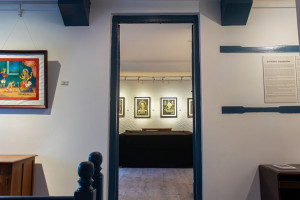Arts
Colours of devotion
‘Sadhana’, by Sundar Sinkhwal, showcases Paubha paintings of deities, creating a temple-like atmosphere at the Siddhartha Art Gallery.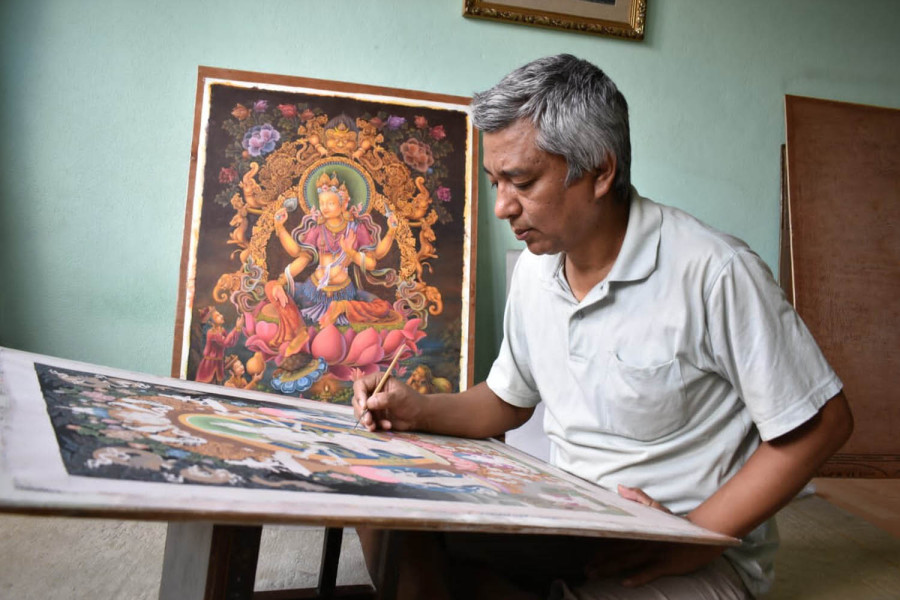
Sanskriti Pokharel
Artists frequently have the chance to participate in group exhibitions, while only a select few hold a solo show. It’s also rare for artists to have a solitary exhibition dedicated to Paubha art.
The scarcity is due to the immense time and dedication this art form demands. “Creating each piece demands effort and countless hours, making it challenging to produce enough work for a solo exhibition,” says artist Sundar Sinkhwal.
Although he has been in this field for years, Sinkhwal’s six to seven years of commitment and labour in Paubha painting led him to produce enough collections for his debut solo exhibition. ‘Sadhana’ is currently on display at Siddhartha Art Gallery and will be open to visitors until November 25.
‘Sadhana’ features many Gods and Goddesses celebrated in Dashain and Tihar. Each piece captures the deities revered in both the Hindu and Buddhist religions. Being there made me feel like I was in an enshrined place—like a temple. The Paubha paintings at the exhibit look similar to those kept in the shops around Bauddha, Thamel and Swyambhunath, making the spectators feel like they are walking in these places.
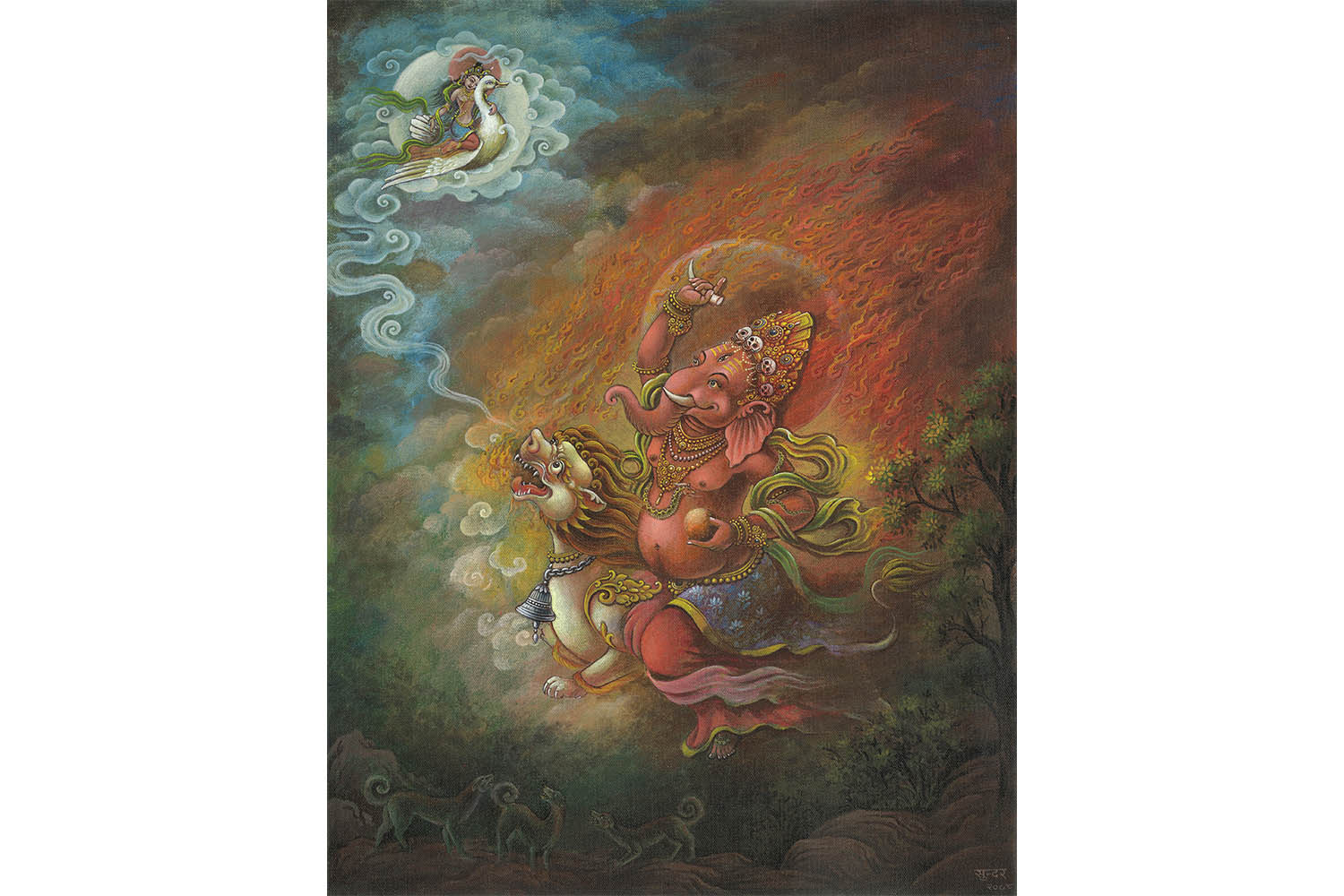
An intricately designed painting of Hari Vahana Lokeshvara welcomed me. When asked what the deity means, Sinkhwal explains, “Lokeshvara is a widely revered god in Buddhism who is considered the lord of all the realms and looks down towards the entire state. He is the god of compassion and mercy. There are numerous forms of Lokeshvara, each representing different aspects of compassion and protection. Hari Vahana Lokeshvara is one of the notable types.”
The other types of Lokeshvara displayed in the exhibition were Sudarshan Lokeshvara, Simhanada Lokeshvara, Rakta Aryavalokeshvara, Harihara Lokeshvara, Avalokeshvara, Sadaskari Lokeshvara, Padampani Lokeshvara and Avalokiteshvara.
Richly adorned with various ornaments, the paintings of these Lokeshvaras are a visual treat to all spectators regardless of their religious practices. With their compassionate facial expressions, they embody the essence of mercy. Moreover, the serene demeanour reflects their role as a protector and guardian for sentient beings. “The details of their faces in the paintings are painted eloquently to convey an aura of wisdom and benevolence,” says Sinkhwal.
The imagery in these paintings often includes elaborate backgrounds featuring elements like lotus flowers, clouds, mountains, rivers and celestial bodies (the sun and moon), which contribute to the overall spiritual ambience of the representation.
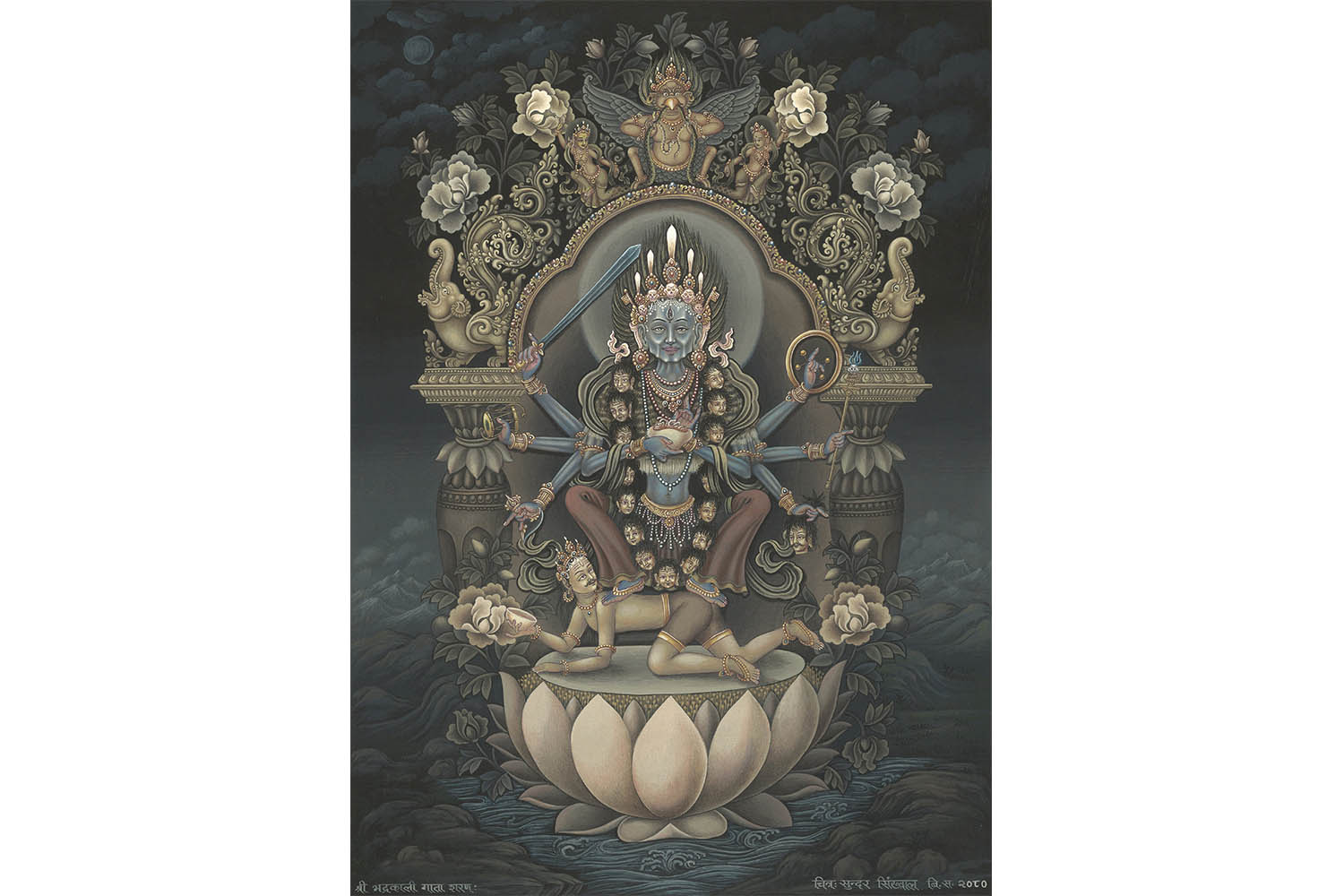
As I observed the bodily features of the Lokeshvaras, a perplexity surfaced: are they male or female? The narrow waistline and ample bosom accentuating their curves initially suggested a feminine form. Seeing my confusion, Sinkhwal clarified, “Lokeshvaras are male gods. Traditionally, male deities were depicted with delicate bodies to enhance their allure. In many art traditions, including European art, the female body is often the primary model for teaching and learning figure drawing. This approach may have influenced Eastern art styles as well.”
Each Lokeshvaras was painted in a distinct colour, again raising the question of why. Sinkhwal explained that each type of Lokeshvaras has its mantras. Lokeshvaras's colour is mentioned in the slok of mantras. It also includes hasta mudras, facial expressions, the number of hands, and more. Therefore, according to the mantras, we form and paint their mental images as mentioned. Additionally, the distinct colours used for different types of Lokeshvaras are not merely aesthetic choices; they carry profound symbolic meanings.
After observing Lokeshvaras's paintings, I focused on the painting of Manjushree. He is adorned with richly detailed and colourful ornaments, signifying his divine status. In his right hand, he holds a sword. Surprisingly, the sword was not for violence, as I initially thought. The sole purpose of Manjushree’s sword is to destroy darkness instead. Sinkhwal adds, “Being the one who embodies enlightened wisdom, the sword serves to illuminate the path to enlightenment by cutting through ignorance and falsehood.”

When asked about his inspiration to create Paubha paintings of gods and goddesses, Sinkhwal shares, “From a young age, I was captivated by mythological stories and would spend hours admiring the paintings in temples. This fascination led me to try painting. As Paubha art began gaining traction in the market, I was drawn to it primarily to make a living. Over time, it evolved into my livelihood and passion.”
Another of Sinkhwal's paintings that captivated me was his depiction of the goddess Lakshmi. The most insightful element in this piece is Lakshmi’s right foot resting on a tortoise. Sinkhwal explained that the tortoise symbolises the ideal pace at which wealth should be used—slowly and thoughtfully. Today, people tend to spend hastily, which is often harmful. The painting conveys that one should approach spending with the steady patience of a tortoise.
When I returned home from the exhibition, I was in awe of Sinkhwal's paintings, marvelling at the detail crafted into every canvas displayed in the gallery.
Sadhana
Where: Siddhartha Art Gallery, Baber Mahal
When: October 24 to November 25
Time: Sunday to Friday: 11:00 am to 5:00 pm, Saturday 12:00 pm to 5:00 pm
Entry: Free




 7.12°C Kathmandu
7.12°C Kathmandu
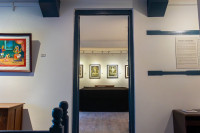
%20(1).jpg&w=200&height=120)


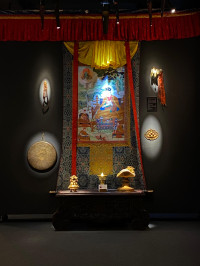
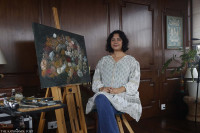
%20(1).jpg&w=300&height=200)
